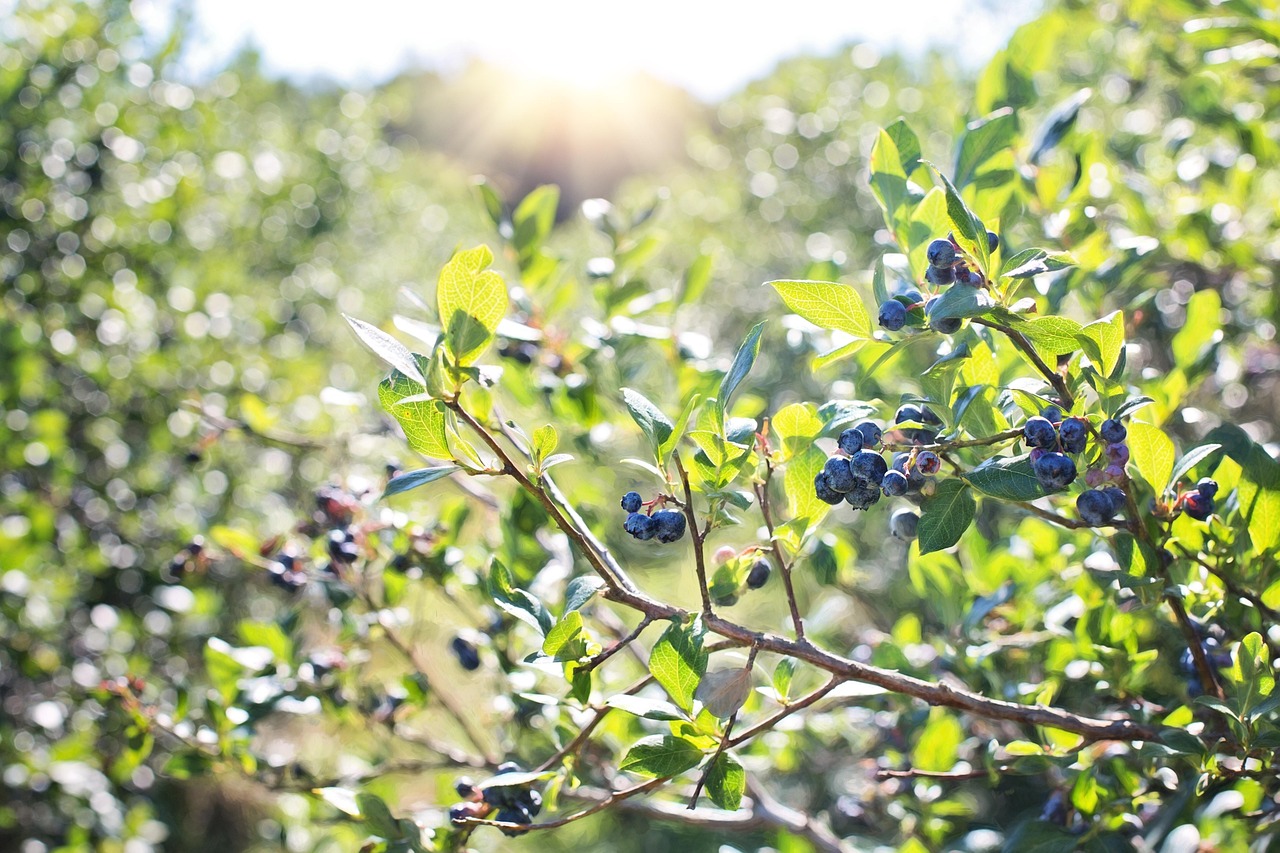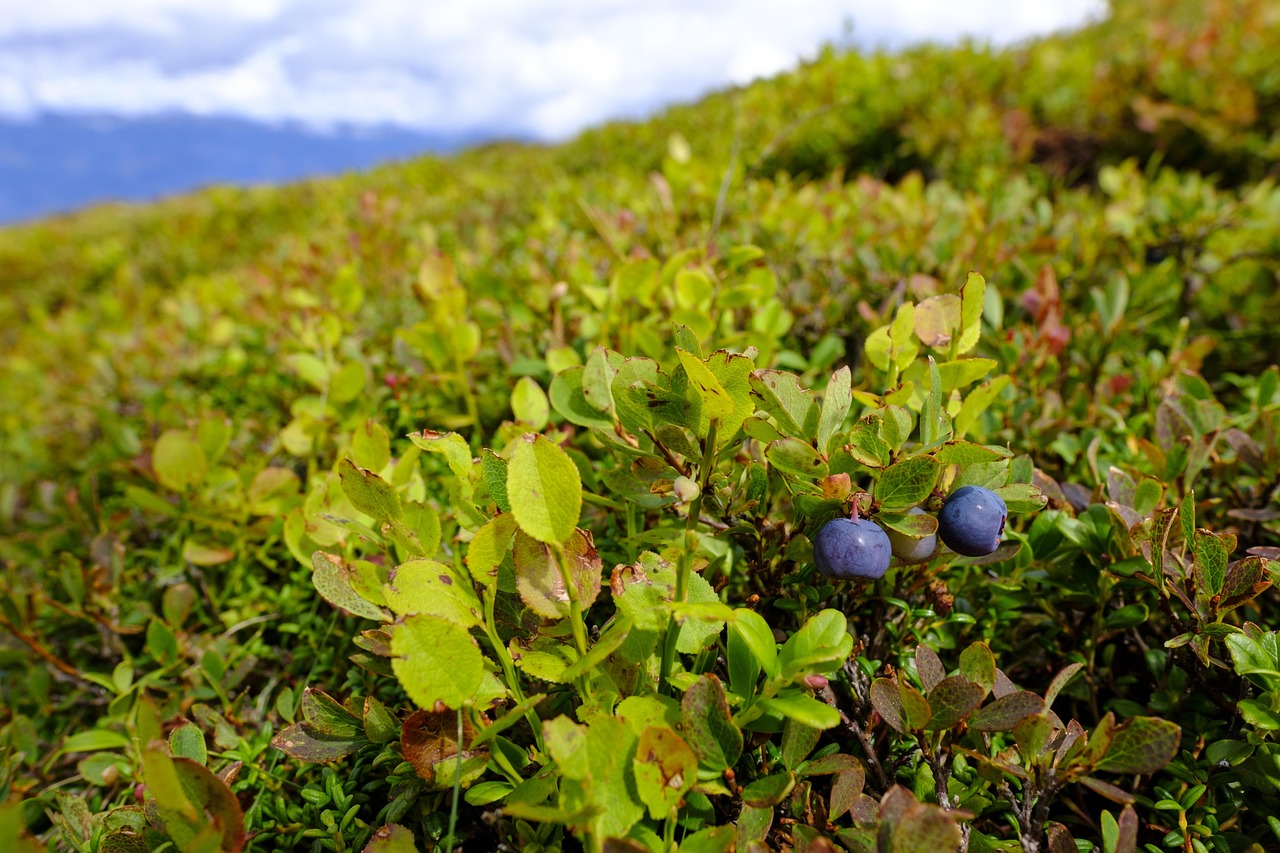Pruning blueberry bushes is essential for promoting compact and tidy growth. Proper pruning improves air circulation, sunlight exposure, and encourages the production of larger, sweeter berries. Regular maintenance ensures your plants remain healthy and manageable.
Blueberry bushes are beloved not only for their delicious fruit but also for their beautiful foliage. Growing them in home gardens has become increasingly popular. However, to maintain their health and productivity, regular care is crucial. One of the most effective ways to care for blueberry bushes is through proper pruning. This practice helps shape the plant, encourages new growth, and ultimately increases fruit yield.

Understanding the basics of blueberry bush pruning can seem daunting at first. However, with some basic knowledge, gardeners can easily keep their bushes looking tidy and thriving. Blueberries grow on wood that is one to two years old. Therefore, selective pruning is necessary to encourage new wood growth while removing older, less productive branches.
Why Prune Blueberry Bushes?
Pruning blueberry bushes serves several important purposes. Here are some key reasons why pruning is beneficial:
- Improved Air Circulation: Pruning opens up the bush, allowing air to flow freely. This reduces the risk of fungal diseases.
- Enhanced Sunlight Exposure: By removing overcrowded branches, sunlight can reach more parts of the bush, promoting healthier growth.
- Increased Fruit Production: Proper pruning encourages the development of new shoots that produce more fruit.
- Tidy Appearance: Regular pruning keeps the bushes compact and manageable in size.
- Encouragement of New Growth: Pruning stimulates growth of younger branches that yield fruit.
The best time to prune blueberry bushes is during late winter or early spring, just before new growth begins. This timing allows gardeners to see the structure of the bush without leaves obstructing the view. It also helps minimize stress on the plant since it is still dormant during this period.

Different types of blueberries may require slightly varying pruning techniques. Highbush blueberries are typically pruned more heavily than lowbush varieties. Understanding the specific needs of your blueberry type will lead to better results in fruit production and bush health.
Essential Pruning Techniques
When it comes to pruning blueberry bushes, there are several techniques that every gardener should know. These techniques will help maintain the shape and health of the plants.
- Remove Dead or Damaged Wood: Start by cutting away any dead or diseased branches. This improves overall plant health.
- Thin Out Overcrowded Branches: Remove some of the older branches that are crossing or crowding others. This will help improve airflow.
- Cut Back Tall Shoots: For plants that have grown too tall, cut back the tallest shoots to encourage lateral growth.
- Shorten Long Branches: Trim long branches back to a healthy bud to encourage new growth.
Pruning should be done carefully to avoid harming the plant. Using clean, sharp tools is essential for making precise cuts. Gardeners should aim to make cuts at a 45-degree angle just above a bud to encourage growth directionally.

It is vital to remember that not all branches need to be pruned each year. A good rule of thumb is to focus on about one-third of the bush at a time. This ensures that some branches remain untouched to continue producing fruit while others are rejuvenated through pruning.
Common Mistakes in Pruning
Even seasoned gardeners can make mistakes when it comes to pruning blueberry bushes. Avoiding these common pitfalls can lead to better results:
- Over-pruning: Removing too many branches can stress the plant and reduce fruit yield.
- Pruning at the Wrong Time: Pruning too late in the season can damage developing buds and reduce harvest.
- Lack of Regular Maintenance: Neglecting regular pruning can lead to overcrowding and a decline in fruit quality.
By being aware of these common mistakes, gardeners can adjust their techniques and ensure their blueberry bushes thrive year after year.

With proper care and attention, blueberry bushes can flourish, producing abundant fruit while maintaining a compact and tidy appearance. Understanding when and how to prune is vital for successful cultivation, allowing every gardener to enjoy a bountiful harvest from their efforts.
Tools Needed for Pruning Blueberry Bushes
When it comes to pruning blueberry bushes, having the right tools is essential for achieving clean cuts and minimizing stress on the plants. Here are some tools that every gardener should consider using:
- Bypass Pruners: Ideal for making clean cuts on smaller branches. These pruners have two blades that slide past each other, creating a clean cut.
- Loppers: Useful for cutting thicker branches. Loppers have long handles, providing greater leverage and making it easier to cut through larger stems.
- Hand Saw: A small hand saw can be beneficial for cutting larger branches that are too thick for pruners or loppers.
- Gloves: Protect your hands from thorns and rough branches while pruning.
- Disinfectant: Clean your tools before and after use to prevent the spread of diseases.
Using these tools properly can enhance the effectiveness of your pruning efforts. Make sure to keep them sharp and in good condition for the best results.
Seasonal Pruning Schedule
Establishing a seasonal pruning schedule can help ensure that your blueberry bushes receive the care they need throughout the year. Here is a suggested timeline for pruning and maintenance:
| Season | Tasks |
|---|---|
| Late Winter/Early Spring | Perform major pruning before new growth begins. Focus on removing dead or damaged wood and thinning crowded branches. |
| Spring | Monitor growth and remove any suckers or unwanted shoots as they appear. |
| Summer | Conduct light pruning after harvest to maintain shape and remove any diseased branches. |
| Fall | No major pruning is recommended. Instead, focus on cleaning up fallen leaves and debris around the bush. |
This schedule provides a balanced approach to maintaining blueberry bushes. Adjustments may be necessary based on specific climate conditions or the growth patterns of your plants.
Signs That Pruning Is Necessary
Understanding when to prune is just as important as knowing how to prune. Here are some signs that indicate it may be time to give your blueberry bushes some attention:
- Overgrowth: If the bush looks unruly or has become too tall, it may be time for a prune to maintain its shape.
- Poor Fruit Production: A noticeable decline in fruit yield can indicate overcrowded branches or older wood that needs removal.
- Dead or Diseased Branches: Any signs of disease, such as discoloration or wilting, should prompt immediate pruning to prevent further spread.
- Suckers: These are shoots that grow from the base of the plant. They can sap energy from the main plant and should be removed if they become too numerous.
By observing these signs, gardeners can take proactive steps to maintain the health and productivity of their blueberry bushes.
Pruning Different Types of Blueberries
Different varieties of blueberries may require specific pruning techniques. Here is a brief overview of how to approach pruning for various types:
Highbush Blueberries
This variety is commonly grown in home gardens. Highbush blueberries benefit from heavier pruning to encourage new growth. Focus on:
- Removing older canes that are more than three years old.
- Thinning branches to allow sunlight and air into the center of the bush.
- Cuts should be made at an angle above a healthy bud to promote new growth directionally.
Lowbush Blueberries
These bushes are typically shorter and spread out. They require less aggressive pruning. Focus on:
- Cutting back only older stems to encourage new shoots from the base.
- Avoiding heavy pruning as this can reduce fruit production significantly.
Southern Highbush Blueberries
This hybrid variety requires similar care to highbush blueberries but may need adjustments based on local climate. Key points include:
- Regularly checking for disease, especially in warmer climates.
- Thinning after harvest to prevent overgrowth during the growing season.
Understanding the specific needs of each type of blueberry bush will lead to better management and healthier plants. Proper pruning tailored to each variety ensures a productive harvest and well-maintained appearance.
Understanding Blueberry Bush Growth Habits
To effectively prune blueberry bushes, it’s important to understand their growth habits. Each blueberry plant has unique characteristics that influence how it grows and produces fruit. Knowing these habits can help guide your pruning decisions.
Growth Patterns of Blueberry Bushes
Blueberry bushes generally exhibit specific growth patterns that can vary by variety. Here are some common traits:
- Canopy Structure: Blueberries typically have a bushy growth habit with multiple stems, creating a dense canopy. This structure is crucial for fruit production.
- Age of Wood: Blueberries produce fruit on one to two-year-old wood. As the canes age, their productivity declines.
- Root System: The root systems of blueberry bushes are shallow but extensive. They require consistent moisture, making proper watering techniques vital.
Understanding these growth patterns will help you make informed pruning choices that promote healthy development and optimal yield.
Watering and Fertilization Considerations
Proper watering and fertilization play a significant role in the health of blueberry bushes. These factors should be considered alongside pruning for a holistic approach to berry production.
Watering Guidelines
Blueberry bushes thrive in moist, well-drained soil. Here are some watering considerations:
- Consistency: Blueberries require consistent moisture, especially during the growing season. Aim for about 1 to 2 inches of water per week, either through rainfall or irrigation.
- Avoid Overwatering: While blueberries need moisture, overwatering can lead to root rot. Ensure that the soil drains well to prevent waterlogging.
- Mulching: Applying a layer of mulch around the base of the bushes helps retain moisture and suppress weeds.
Fertilization Strategies
Fertilizing blueberry bushes correctly can enhance their growth and fruit production. Here are some tips:
- Soil Testing: Before applying any fertilizer, conduct a soil test to determine nutrient levels and pH. Blueberries prefer acidic soil with a pH between 4.5 and 5.5.
- Use Acidic Fertilizers: Choose fertilizers specifically formulated for acid-loving plants. Ammonium sulfate is a common choice.
- Timing: Apply fertilizer in early spring as new growth begins. A second application in late spring can support fruit development.
By managing watering and fertilization effectively, you can complement your pruning efforts for healthier blueberry bushes.
Pest and Disease Management
Pests and diseases can pose significant challenges to blueberry production. Regular monitoring and preventative measures are essential for maintaining healthy plants.
Common Pests
Several pests may target blueberry bushes, including:
- Blueberry Maggot: This pest lays eggs in developing fruit, causing it to drop prematurely. Monitor for signs of infestation and use appropriate insecticides if necessary.
- Aphids: Aphids suck sap from the leaves and can transmit diseases. Regularly check for clusters on new growth and treat with insecticidal soap if needed.
- Spider Mites: These tiny pests can cause leaf discoloration and webbing. Increase humidity around the plants and consider using miticides if infestations occur.
Common Diseases
Diseases can also affect blueberry bushes. Here are a few to watch for:
- Powdery Mildew: This fungal disease appears as white powdery spots on leaves. Improve air circulation through pruning and avoid overhead watering to reduce humidity.
- Cane Blight: This disease causes wilting and dieback of stems. Remove affected branches immediately to prevent the spread of infection.
- Botrytis Blight: Also known as gray mold, this disease affects flowers and ripe fruit. Ensure proper spacing between plants to improve airflow and reduce moisture retention.
Being proactive about pest and disease management can significantly improve the health of your blueberry bushes and ensure a successful harvest. Regular inspection paired with timely action is key to effective control.
The Importance of Seasonal Maintenance
Seasonal maintenance is crucial for the long-term health and productivity of blueberry bushes. Beyond pruning, several tasks should be performed throughout the year to ensure optimal growth.
Spring Maintenance Tasks
In addition to pruning, spring is an important time for various maintenance activities:
- Weed Control: Remove weeds that compete for nutrients and water. Mulching can help suppress weed growth.
- Pest Monitoring: Keep an eye out for pests emerging in spring and take action as needed.
- Irrigation Setup: Ensure your irrigation system is in place to meet the water needs of your plants during the growing season.
Summer Maintenance Tasks
During the summer months, focus on maintaining plant health:
- Regular Watering: Ensure consistent moisture levels, especially during dry spells.
- Sucker Removal: Continue to remove suckers that may divert energy from fruit production.
- Pest Management: Monitor for any new pest activity and manage accordingly.
Fall Maintenance Tasks
The fall season provides an opportunity for additional care:
- Cleansing Debris: Remove fallen leaves and berries from around the bushes to reduce pest and disease risks.
- Soil Preparation: Consider adding organic matter or compost to improve soil health ahead of winter.
- Avoid Late Pruning: Refrain from any significant pruning in the fall, as this can expose plants to winter damage.
By adhering to a seasonal maintenance schedule, gardeners can foster healthier blueberry bushes that yield abundant fruit while remaining compact and tidy throughout their lifespan.
Additional Tips for Successful Blueberry Bush Care
In addition to pruning and seasonal maintenance, there are several other factors to consider for successful blueberry bush care. These tips can enhance your growing experience and improve the health of your plants.
Choosing the Right Location
The location of your blueberry bushes plays a significant role in their growth and productivity. Here are key considerations:
- Sunlight: Blueberry bushes thrive in full sun. Aim for at least six to eight hours of direct sunlight daily to promote healthy growth and fruit production.
- Soil Drainage: Choose a site with well-draining soil, as blueberries do not tolerate standing water. Raised beds or mounds can improve drainage in areas with heavier soils.
- Protection from Wind: Planting blueberry bushes in a sheltered area can protect them from harsh winds, which can damage branches and reduce fruit set.
Companion Planting
Companion planting can benefit your blueberry bushes by enhancing biodiversity and improving soil health. Consider planting:
- Other Berry Varieties: Planting other berries, such as raspberries or blackberries, can attract beneficial insects that help with pollination.
- Herbs: Herbs like thyme and oregano can deter pests while attracting pollinators.
- Flowers: Flowering plants like marigolds can attract beneficial insects and provide habitat for pollinators.
By incorporating companion plants, you create a healthier ecosystem that supports the overall health of your blueberry bushes.
Understanding Pollination Needs
Blueberry bushes are self-pollinating, but planting multiple varieties can increase fruit yield. Here are some tips regarding pollination:
- Diversity: Planting different varieties of blueberries can enhance cross-pollination, leading to higher yields and larger fruit.
- Attracting Pollinators: Encourage pollinators like bees by planting flowering plants nearby. This will help ensure effective pollination during the blooming period.
Harvesting Blueberries
Harvesting is the exciting culmination of your efforts. Here are some tips for harvesting blueberries effectively:
- Timing: Blueberries should be harvested when they turn a deep blue color and are slightly soft to the touch. Avoid picking them too early, as they may not have reached their full sweetness.
- Gentle Handling: Handle blueberries gently to avoid bruising. Use shallow containers for collection to prevent crushing the fruit.
- Regular Harvesting: Blueberries ripen at different times. Regularly check your bushes and harvest every few days during the peak season to enjoy the best flavor.
Final Thoughts
Caring for blueberry bushes through proper pruning and maintenance is essential for achieving compact and tidy growth while maximizing fruit production. By understanding the specific needs of different blueberry varieties, implementing seasonal maintenance, and employing best practices for watering, fertilization, pest management, and companion planting, gardeners can create an environment conducive to thriving blueberry plants.
Regular pruning not only shapes the bushes but also promotes healthier growth and fruit quality. Monitoring your plants throughout the year ensures that any issues are addressed promptly, leading to a more successful harvest. With patience and attention to detail, you can cultivate beautiful blueberry bushes that yield abundant fruit year after year.
Ultimately, the joy of nurturing blueberry bushes extends beyond just harvesting delicious berries; it encompasses the satisfaction of gardening itself. Enjoy the process, learn from your experiences, and savor the fruits of your labor as you watch your blueberry bushes flourish.
